Institute of Physics of Materials AS CR, v. v. i. > Groups > Multiscale Modelling and Measurements of Physical Properties

The main purpose of our research activities is to elucidate how functional properties of materials depend on their underlying atomic structure, types of crystal lattice defects and their spatial arrangement, dimensionality of nanostructures and surface properties. We currently focus on heteroepitaxial semiconductor films based on III-nitrides (2D structures, thickness 10-1000 nm), magnetic nanoparticles (Fe3O4, nanocubes 10-50 nm), aggregates of magnetic nanoparticles with low fractal dimensions (D <2) and macroscopic low-temperature behavior of transition metals. This research is carried out using a wide range of theoretical models (DFT, atomic models based on empirical and semi-empirical potentials, Monte Carlo, Landau-Ginzburg, cellular automata, Master equation), which are combined with experimental studies using electron microscopy (TEM, STEM, SEM, EBIC, EBSD), scanning probe microscopy (AFM, MFM, CPEM). We are developing several theoretical models for interpretations of the EBIC current, magnetic diffraction spectra, properties of magnetic nanoparticles and yield criteria for predictions of the onset of plastic deformation in bcc and hcp metals.
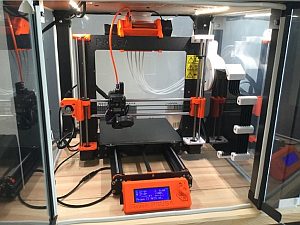 3D Printer Prusa i3 MKS3+ & MMU2S (Prusa Research)
3D Printer Prusa i3 MKS3+ & MMU2S (Prusa Research)
Contact person: doc. Ing. Roman Gröger, Ph.D.
The Prusa i3 MK3S+ 3D printer is the successor to the successful MK2 model. The main advantages of the MK3S+ include a redesigned extruder, a range of sensors and smart features.
 Jenway 7415 spectrophotometer
Jenway 7415 spectrophotometer
Contact person: Mgr. Martin Sojka, Ph.D.
Jenway 7415 spectrophotometer allows measurement of spectra in ultraviolet and visible spectrum and the concentration of solutions.
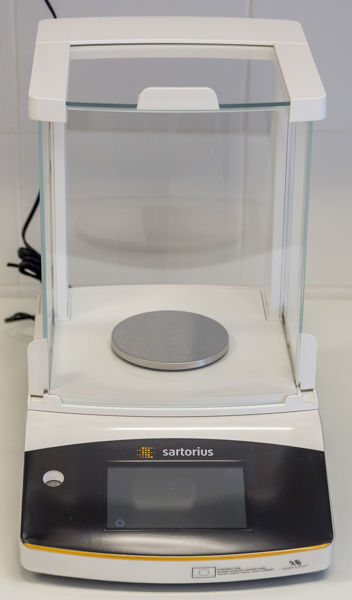 Quintix® 224-1S precision balance Sartorius
Quintix® 224-1S precision balance Sartorius
Contact person: Mgr. Martin Sojka, Ph.D.
Accurate 0.1 mg precision balance with weighing capacity of 220 g and with internal, fully automatic, temperature and time-controlled "isoCAL" calibration, or manual external calibration.
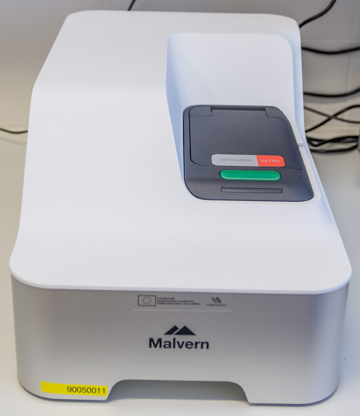 Panalytical ZetaSizer Ultra Malvern
Panalytical ZetaSizer Ultra Malvern
Contact person: Mgr. Martin Sojka, Ph.D.
The Zetasizer Ultra is a system for the measurement of particle and molecular size in the range from 0.3 nm to 10 µm, particle charge and particle concentration.
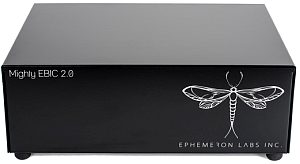 MightyEBIC 2.0 (Ephemeron Labs)
MightyEBIC 2.0 (Ephemeron Labs)
Contact person: doc. Ing. Roman Gröger, Ph.D.
Scan controller and data acquisition interface for making quantitative Electron Beam Induced Current (EBIC) measurements.
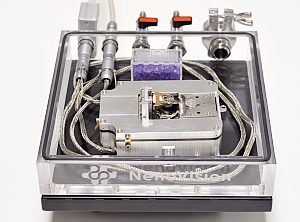 SPM LiteScope (NenoVision)
SPM LiteScope (NenoVision)
Contact person: doc. Ing. Roman Gröger, Ph.D.
Scanning Probe Microscope (SPM) designed for easy integration into the Scanning Electron Microscopes. The combination of complementary AFM and SEM techniques enables to use the advantages of both commonly used microscopy techniques. LiteScope incorporates a unique imaging technique "Correlative Probe and Electron Microscopy (CPEM)" enabling simultaneous acquisition of AFM and SEM data. LiteScope and the CPEM technology allow sample analysis in a way that was previously difficult or impossible by the two imaging technologies simultaneously.
all publications

Multiscale Modelling and Measurements of Physical Properties
| Head | doc. Ing. Roman Gröger, Ph.D. |
| [javascript protected email address] | |
| Phone number | +420 532 290 448 |
| Room | 307 |
The main purpose of our research activities is to elucidate how functional properties of materials depend on their underlying atomic structure, types of crystal lattice defects and their spatial arrangement, dimensionality of nanostructures and surface properties. We currently focus on heteroepitaxial semiconductor films based on III-nitrides (2D structures, thickness 10-1000 nm), magnetic nanoparticles (Fe3O4, nanocubes 10-50 nm), aggregates of magnetic nanoparticles with low fractal dimensions (D <2) and macroscopic low-temperature behavior of transition metals. This research is carried out using a wide range of theoretical models (DFT, atomic models based on empirical and semi-empirical potentials, Monte Carlo, Landau-Ginzburg, cellular automata, Master equation), which are combined with experimental studies using electron microscopy (TEM, STEM, SEM, EBIC, EBSD), scanning probe microscopy (AFM, MFM, CPEM). We are developing several theoretical models for interpretations of the EBIC current, magnetic diffraction spectra, properties of magnetic nanoparticles and yield criteria for predictions of the onset of plastic deformation in bcc and hcp metals.
Research directions:
- elucidation of the origin of threading dislocations in III-nitride semiconductor heterostructures
- formulation of ionic-covalent semi-empirical potentials for studies of extended defects in III-nitrides
- synthesis, characterization and functionalization of nanoparticles for biology
- development of equipments for measurements of specific absorption rates of magnetic nanoparticles in alternating magnetic fields
- characterization of functional properties of materials using TEM (STEM), SEM (EBSD, EBIC), SPM (AFM, MFM, nanoEBIC, CPEM)
- theoretical models for interpretations of EBIC contrast and of magnetic neutron diffraction spectra
- experimental and theoretical studies of plastic deformation of bcc metals (V, Nb, Ta, Mo, W) incl. the effects of magnetism (Cr, Fe), and of hcp metals (Mg)
- elucidation of the mechanisms of plastic deformation in high entropy alloys CoCrFeMnNi and in precipitation-strengthened FeNiCr steels
- formulation of mesoscopic models of self-organization and pattern formation in correlated microstructural domains
Collaborations
- University of Cambridge (UK)
- ON Semiconductor (Czechia, Belgium)
- CzechNanoLab/CEITEC (Czechia)
- Istituto Italiano di Tecnologia (Italy)
- Paul Scherrer Institut (Switzerland)
- University of Pennsylvania (USA)
- ICAMS and Ruhr-Universität Bochum (Germany)
- Materials Growth & Measurement Laboratory (Czechia)
Researchers
| Name | Phone numbers | Rooms | |
|---|---|---|---|
| Mgr. Jan Fikar, Ph.D. | +420 532 290 455 | 419 | [javascript protected email address] |
| Mgr. Andrej Ostapovec, Ph.D. | +420 532 290 429 | 421 | [javascript protected email address] |
| Mgr. Martin Sojka, Ph.D. | +420 532 290 481 | 407 | [javascript protected email address] |
| Mgr. Tereza Sojková, Ph.D. | +420 532 290 481 | 407 | [javascript protected email address] |
Phd students
| Name | Phone numbers | Rooms | |
|---|---|---|---|
| Ing. Zuzana Šiška | +420 532 290 451 | 308 | [javascript protected email address] |
| MSc. Nhu Quynh Thi Tran | +420 532 290 451 | 308 | [javascript protected email address] |
| M.Tech. Ankit Yadav | +420 532 290 451 | 308 | [javascript protected email address] |
Visiting Scientists
| Name | Phone numbers | Rooms | |
|---|---|---|---|
| doc. Mgr. Ondrej Hovorka, Ph.D. | +420 532 290 448 | 307 | [javascript protected email address] |
| Mgr. Matouš Mrovec, Ph.D. | +420 532 290 448 | 307 | [javascript protected email address] |
Diploma students
| Name | Phone numbers | Rooms | |
|---|---|---|---|
| Oleksandr Anikanov | +420 532 290 461 | 427 | [javascript protected email address] |
| Mgr. Adam Fedor | +420 532 290 451 | 308 | [javascript protected email address] |
| Bc. Miroslav Polách | +420 532 290 451 | 308 | [javascript protected email address] |
| Julie Višinková | +420 532 290 702 | 214 | [javascript protected email address] |
| Project number | Name | Investigator |
|---|---|---|
| CZ.02.01.01/00/22_008/0004596 | Sensors and Detectors for Future Information Society (SenDISo) | doc. Ing. Roman Gröger, Ph.D. |
| 24-12526S | Exploitation of surface phenomena for elimination of extended defects in semiconductor nanostructures | doc. Ing. Roman Gröger, Ph.D. |
| Project number | Name | Investigator |
|---|---|---|
| CZ.01.1.02/0.0/0.0/20_358/0023778 | Correlative measurements of the magnetic properties of surface | doc. Ing. Roman Gröger, Ph.D. |
| 8J19UA037 | Non-Schmid behavior of dislocations in magnesium and its alloys | Mgr. Andrej Ostapovec, Ph.D. |
| 19-23411S | Interplay of plasticity and magnetism in alpha-iron and chromium | doc. Ing. Roman Gröger, Ph.D. |
| 763685 | BACK FOR THE FUTURE (CZ) | doc. Ing. Roman Gröger, Ph.D. |
| LQ1601 | CEITEC 2020 | prof. Ing. Luboš Náhlík, Ph.D. |
| CZ.1.05/1.1.00/02.0068 | CEITEC – Central European Institute of Technology | prof. Ing. Luboš Náhlík, Ph.D. |
| P204/10/0255 | Calculation of the Peierls barrier in bcc metals and its dependence on stress | doc. Ing. Roman Gröger, Ph.D. |
| Marie-Curie International Reintegration Grant (IRG), No. 247705 “MesoPhysDef” | Mesoscopic framework for modeling physical processes in multiphase materials with defects | doc. Ing. Roman Gröger, Ph.D. |
 3D Printer Prusa i3 MKS3+ & MMU2S (Prusa Research)
3D Printer Prusa i3 MKS3+ & MMU2S (Prusa Research)Contact person: doc. Ing. Roman Gröger, Ph.D.
The Prusa i3 MK3S+ 3D printer is the successor to the successful MK2 model. The main advantages of the MK3S+ include a redesigned extruder, a range of sensors and smart features.
 Jenway 7415 spectrophotometer
Jenway 7415 spectrophotometerContact person: Mgr. Martin Sojka, Ph.D.
Jenway 7415 spectrophotometer allows measurement of spectra in ultraviolet and visible spectrum and the concentration of solutions.
 Quintix® 224-1S precision balance Sartorius
Quintix® 224-1S precision balance SartoriusContact person: Mgr. Martin Sojka, Ph.D.
Accurate 0.1 mg precision balance with weighing capacity of 220 g and with internal, fully automatic, temperature and time-controlled "isoCAL" calibration, or manual external calibration.
 Panalytical ZetaSizer Ultra Malvern
Panalytical ZetaSizer Ultra MalvernContact person: Mgr. Martin Sojka, Ph.D.
The Zetasizer Ultra is a system for the measurement of particle and molecular size in the range from 0.3 nm to 10 µm, particle charge and particle concentration.
 MightyEBIC 2.0 (Ephemeron Labs)
MightyEBIC 2.0 (Ephemeron Labs)Contact person: doc. Ing. Roman Gröger, Ph.D.
Scan controller and data acquisition interface for making quantitative Electron Beam Induced Current (EBIC) measurements.
 SPM LiteScope (NenoVision)
SPM LiteScope (NenoVision)Contact person: doc. Ing. Roman Gröger, Ph.D.
Scanning Probe Microscope (SPM) designed for easy integration into the Scanning Electron Microscopes. The combination of complementary AFM and SEM techniques enables to use the advantages of both commonly used microscopy techniques. LiteScope incorporates a unique imaging technique "Correlative Probe and Electron Microscopy (CPEM)" enabling simultaneous acquisition of AFM and SEM data. LiteScope and the CPEM technology allow sample analysis in a way that was previously difficult or impossible by the two imaging technologies simultaneously.
all publications


